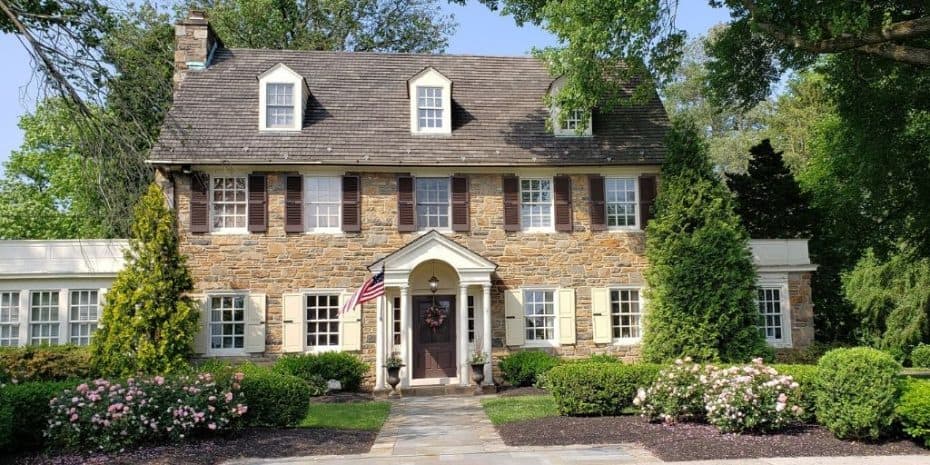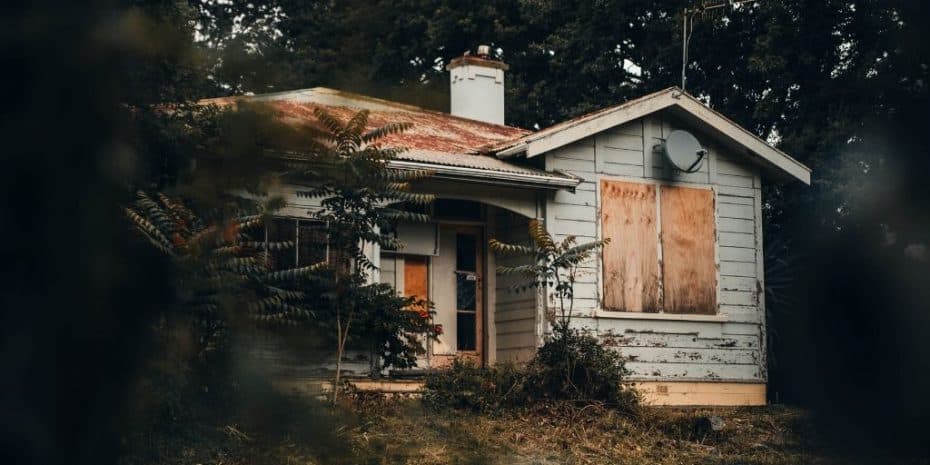Real estate investors (and to some extent, lenders, and brokers) use the terms Class A, Class B, Class C, and Class D to convey some important attributes of a property and the neighborhoods they're located in.
Determining what “class” a property falls under involves several important physical and financial characteristics. Some of these attributes typically include (but are not limited to):
- location of the property
- age of the property
- income levels of residents
- appreciation
- condition of the property
- crime rates
One important point to remember when discussing property classes is that everything is relative. A property needs to be evaluated in the context of the other properties in the general vicinity.
For example, a Class A property in one geographic location should only be compared to other Class A properties in the same area (and an “area” may be a city or county or another geographical area within a state). It wouldn't be fair to compare the Class A properties of Los Angeles, CA with the Class A properties of Fort Garland, CO – because they're two completely different markets that have absolutely nothing in common.
The Property Class Ladder
So what’s the difference between Class A, B, C, and D properties in real estate?
I like to think of it like a ladder.
At the very top rung of the real estate ladder, you have Class A properties, which represent the most expensive, luxurious, and pristine properties, in the best locations and the least amount of maintenance and issues.
At the very bottom rung, is Class D properties, which are the most inexpensive properties, in the worst locations, and with the most amount of maintenance and issues.
Class B and Class C properties are the rungs in the middle of the ladder in sequential order between Class A and D.
What Is a Class A Property?
Class A properties are the newest and best-maintained homes and buildings at the most expensive end of the property spectrum within a local market.
Class A properties attract tenants and buyers who can afford to live in luxury. These properties typically have a positive outlook for future appreciation because of their access to the best amenities and attractions the market has to offer.
General Characteristics of Class A Properties
- Location: Built in the most desirable parts of town with little crime.
- Age of the property: Typically built within the previous 10 years.
- Income level of the residents: High-income earners.
- Appreciation: Positive property appreciation for well into the foreseeable future.
- Property condition: Well-maintained with few evident physical issues.
In short, Class A properties are the nicest houses in the nicest neighborhoods. These are the properties that are highest-priced, best-kept properties in the general vicinity. Class A properties are often the newest properties, but they don’t have to be priced on the higher range of the spectrum.
Pros and Cons of Class A Properties
Class A properties may represent the best-looking buildings in the best neighborhoods, but do they make good financial sense to invest in this type of real estate?
Pros of Investing in Class A Properties
- High earning potential. Class A properties will have the highest potential for charging the highest amount of gross rent.
- Well-managed and -maintained. For an investor who isn’t interested in dealing with the most common headaches that come with dilapidated properties and difficult tenants, Class A properties—while not a guarantee of smooth sailing—will typically allow the property owner to side-step the most challenging aspects of managing properties and finding good tenants. Part of what makes a Class A property desirable is the lack of deferred maintenance and a long list of needed repairs.
- Great potential for appreciation. Sometimes a Class B, Class C, or Class D neighborhood can slowly transform to a Class A neighborhood through the process of gentrification, but more often, a Class A neighborhood will stay a Class A neighborhood for decades to come. This is partially because of the way homes are built and how property parcels are laid out, which allows Class A properties to be more reliable for stronger appreciation over a longer period.
- High-income tenants stay longer. While every tenant’s situation is unique, there’s a case to be made that a high-income tenant is likely to stay put for a longer period of time, which allows for more consistent and uninterrupted cash flow for the landlord.
Disadvantages of Investing in Class A Properties
- Higher upfront investment. Compared to other property classes, Class A properties require a higher initial investment by far. Even with the best financing options, the down payment alone for a Class A property will be a large obstacle for many real estate investors.
- Extended cost recovery. With the higher upfront cost of acquiring a Class A property, along with the initial cost of repairs and improvements on a larger property, it may require a significant time period to produce positive cash flow for this property type.
- Higher maintenance costs. Since most Class A properties are larger in size and/or have more built-in luxuries that aren’t assumed with other property classes (e.g., pools, air conditioning, underground sprinkling, etc), more components will inevitably break and need to be repaired or replaced, thus leading to higher ongoing maintenance costs.
- Greater risk of vacancy and loss. In many markets, there will be a smaller demand for Class A properties than other property types. As such, Class A properties may sit vacant for longer periods between tenants, and the cost of a large vacant property can add up quickly.
Class A investors are typically those with a stronger financial position with the ability to cover higher costs (both initial and ongoing) that arise from deferred maintenance and longer vacancies.
What Is a Class B Property?
Class B properties are well-built and well-maintained medium-sized homes. Typical Class B properties are more than ten years old and lived in, but well-cared for.
Class B properties are often located in neighborhoods close to schools and shopping areas and are often occupied by middle-income families with children.
General Characteristics of Class B Properties
- Location: Areas where homes are a little older and there is a little-reported crime.
- Age of the property: Typically 10-30 years old.
- Income levels of the residents: Resident income is in the middle to upper-middle income bracket.
- Appreciation: Fair appreciation, but may not appreciate as well as Class A properties.
- Property condition: Some maintenance may be required.
In short, Class B properties aren’t the nicest or most expensive houses, but they offer a lot of benefits and make financial sense for a larger demographic of the population.
These are the properties that are not the highest-priced or best-kept properties in the general vicinity, but they’re in the higher end of the spectrum, both in terms of size, condition, and overall amenities. Class B properties aren’t necessarily the newest properties, but they can be.
Pros and Cons of Class B Properties
Class B properties have a lot of advantages to offer someone who’s using the home as their primary residence, but does it make good financial sense to invest in this type of real estate as a fix-and-flip or a rental property?
Advantages of Investing in Class B Properties
- Reasonable cost. The upfront cost is not as prohibitive as a Class A property.
- Steady income. Middle-Income families are typical residents. Generally, this provides a steady tenant base where turnover is lower.
- Tenants take care of the property themselves. Most of these residents take good care of their homes. Yards are kept mowed because of a higher expectation of the tenants.
Disadvantages of Investing in Class B Properties
- Increased maintenance. Some Class B Properties may need more repairs due to normal wear and tear, including the roof and HVAC.
- Not a tremendous amount of equity. There may not be a tremendous amount of equity available with a Class B property.
- Still a bit expensive. Class B properties may be less ideal for a new investor who has limited cash and liquidity to invest.
Class B investors typically have a stronger financial position with the ability to cover higher costs (both initial and ongoing) that arise from the moderate amount of deferred maintenance. Class B properties maintain their value for a long time.
What Is a Class C Property?
Class C properties are older homes that are often owned and resided in by middle-income families and senior citizens who have lived in their homes for many years.
Class C properties are reasonably well-kept but will also require some repairs. The majority of Class C homes are smaller in size.
General Characteristics of Class C Properties
- Location: Typically in older, mature areas, where crime may be more evident.
- Age of the property: Class C properties are usually more than 30 years old.
- Income levels of the residents: Typically lower to middle-income.
- Appreciation: Future value of the property may or may not increase with time.
- Property condition: Some costly maintenance may be required if it has been deferred.
Class C properties and neighborhoods are always in demand, not because of their luxury or grand appearance, but because of their practicality and affordability.
While these properties are smaller, older, and significantly less expensive than Class A and Class B properties, most cities and huge portions of land are allocated to serving Class C neighborhoods because a large percentage of the overall population is in need of affordable housing.
Pros and Cons of Class C Properties
Class C properties are very commonly used by real estate investors as long-term buy-and-hold rental properties or as fix-and-flips.
Advantages of Investing in Class C Properties
- Low barrier to entry. Class C properties have a lower appraised value, which means a lower barrier to entry for investors with less liquidity.
- Discounted price. Many Class C properties can be purchased at a discount.
- High demand. Class C Properties are the most in-demand type of housing in many markets.
- Portfolio diversification. Class C properties can be a good strategy for diversifying an investor’s portfolio.
Disadvantages of Investing in Class C Properties
- Short-term income. Because of a potentially wavering income level, the tenant base for Class C properties may be more short-term than long-term.
- More repairs needed. Many Class C properties will require more repairs because of higher deferred maintenance.
- Cosmetic touch-ups. Some Class C properties may require additional cosmetic repairs to make it market-ready.
Many investors will have experience with Class C properties at some point in their investing career. This is thanks to these properties’ benefits, namely the lower cost and perceived simplicity compared to other property classes.
What Is a Class D Property?
Class D properties are older homes located in areas of high crime and violence.
These homes often necessitate significant repairs and may have outstanding code violations. Residents in Class D properties may have to drive farther to get to basic shopping areas or grocery stores.
General Characteristics of Class D Properties
- Location: Typically found in areas that have been lived in for many decades. A significant level of crime is reported in this area.
- Age of the property: Many residences in this area are older homes.
- Income levels of residents: Lowest income level.
- Appreciation: Not much appreciation can be gained from these properties unless significant gentrification occurs in the surrounding neighborhood.
- Property condition: Properties in this area typically require major repairs. This is often due to the age and overall neglect of the property.
Class D properties and neighborhoods (sometimes referred to as “war zone” neighborhoods) will have the least-expensive homes and buildings in the local market. It’s not uncommon to find vacant and dilapidated houses in Class D neighborhoods.
These properties often require extensive repairs and may be negatively affected by the stigma of crime in the vicinity.
Pros and Cons of Class D Properties
Class D properties may look enticing simply because of the low cost and lower financial barrier to entry. They may make sense under the right investing strategy, but there are also some significant drawbacks to be aware of with Class D properties.
Advantages of Investing in Class D Properties
- Low acquisition cost. Class D properties can often be purchased at a discount and provide a noteworthy amount of equity. Many investors seek Class D properties as their first investment because of the lower acquisition cost.
- Relatively low repair costs. The prospective buyer/renter who seeks out a Class D property typically won’t expect the highest standard of living. While repairs will almost certainly be necessary, they may not be as expensive or extensive as some other property classes.
Disadvantages of Investing in Class D Properties
- Inconsistent income. Frequent tenant turnover may result in inconsistent revenue.
- Crime rate. Crime levels may prevent some people from wanting to live there.
- More frequent repairs. Class D Properties often require more frequent repairs because of the deferred maintenance and older age associated with this property type.
Class D investors are typically those with less liquidity available to acquire more expensive property types. Class D property investors may also have a specific strategy of acquiring multiple homes in the same neighborhood with the intent of gentrifying the area as a whole.
Takeaways
An understanding of the language of property classes will enable an investor to confidently interact with others in their network about various properties in their target area.
Each property class has its own set of risks and rewards. The investor who understands the most about their investment area is aware of area happenings in their specific area and realistically considers the risk factors can be successful.













